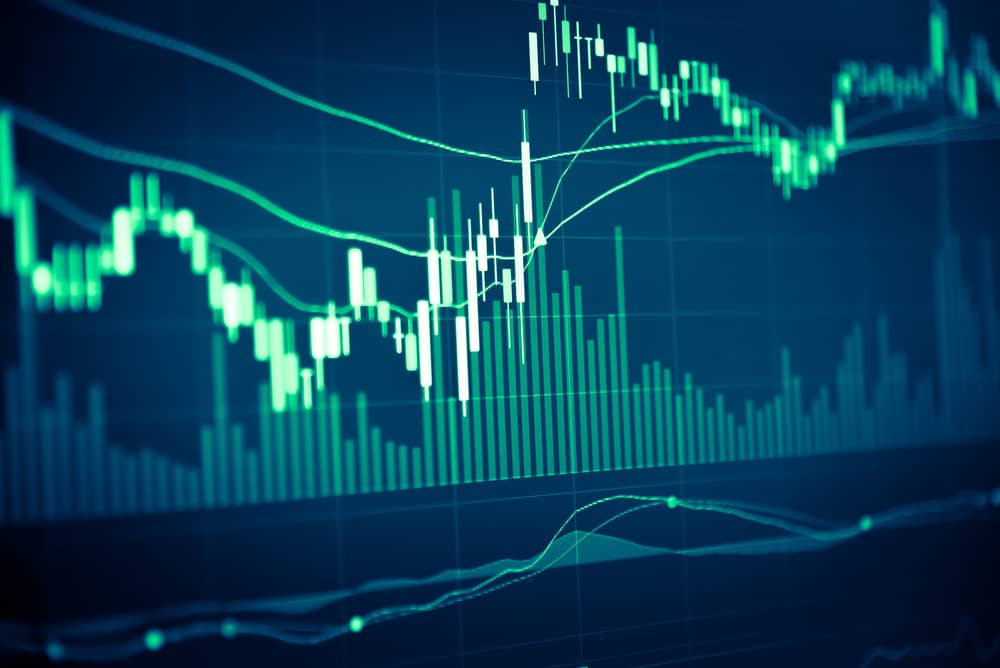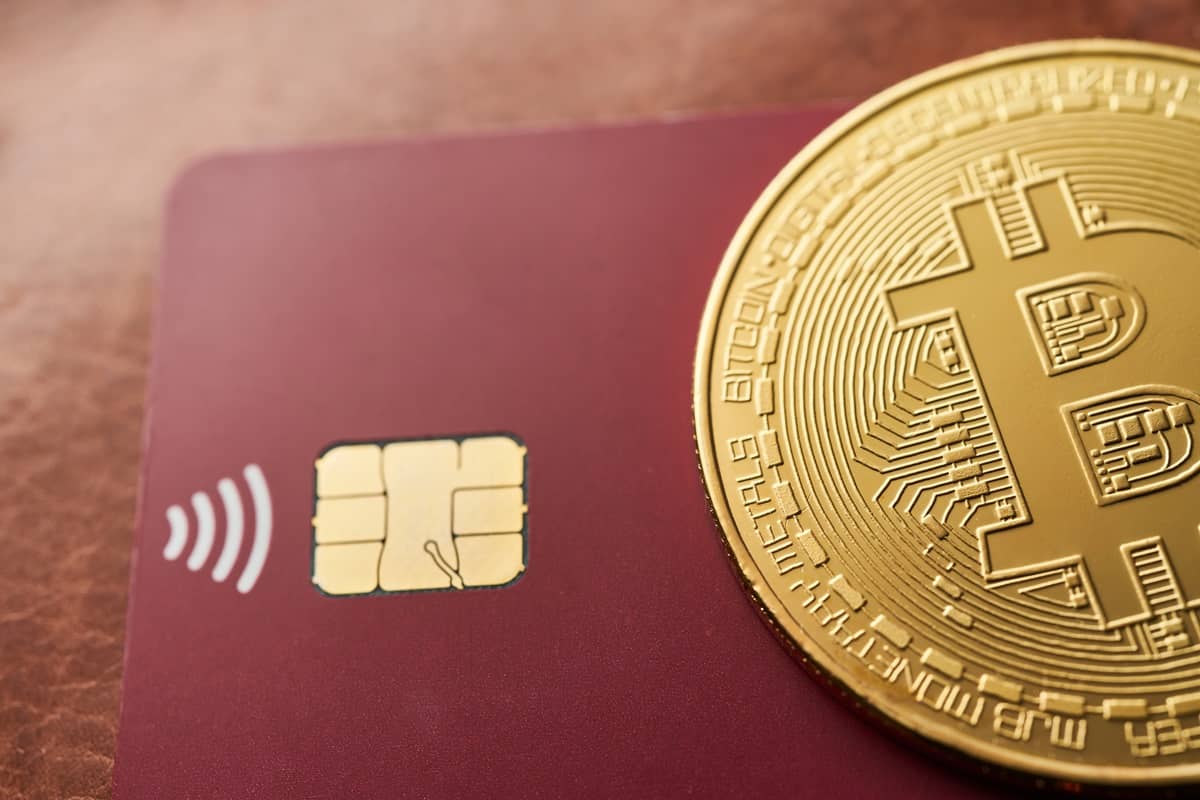
Imagine stepping into a realm where traditional investing concepts intertwine with modern digital paradigms. Where classic financial market strategies interplay with blockchain advancements; this is the fascinating world of Crypto Quantitative Trading.
Does the mere mention of Cryptocurrency get your adrenaline pumping? Or does a deep dive into statistical models and algorithms set your mind racing towards potential capital gains? If your answer to either is yes, then you, my friend, are about to embark on an enlightening journey as we unravel the intriguing field of Crypto Quantitative Trading.
Crypto Quantitative Trading is an amalgamation of sophisticated mathematical and statistical techniques, machine learning algorithms, and financial acuity applied to the volatile world of cryptocurrencies for making data-driven, strategic investment decisions.
Think of it as the 'Moneyball' approach - leveraging numbers and crunching vast datasets to decipher trends and predict possible future price actions in the Crypto market, rather than relying solely on human intuition or traditional technical analysis. Ready to delve deeper and unlock its secrets? Strap on your seat belts and keep reading!
The Framework of Crypto Quantitative Trading
Understanding the composition of crypto quantitative trading is like piecing together a complicated puzzle. You first need to grasp the core components involved. At its heart, crypto quantitative trading is a systematic strategy that involves mathematical computations. It leverages sophisticated mathematical models to decide when and how to trade crypto assets.
Let's dissect it further. Firstly, crypto value predictions. These play a critical role in this process. Traders use complex math models to approximate future prices. These models consider numerous factors like historical data, trends, and market conditions.
Secondly, it might be surprising, but even sentiment analysis has its rightful place in crypto quantitative trading. Traders can use algorithms to pore over vast amounts of data coming from social media or news articles. They process this information to gauge the market sentiment, further informing their trading decisions.
Lastly, risk management is paramount in this trading methodology. Traders use quantitative methods not only to identify profitable trades but also to manage the level of risk involved with every trade. This is accomplished by implementing risk assessment algorithms to help them understand the potential downsides of each trade.
It's worth mentioning that all these elements work in tandem, creating a well-greased trading machine that, with the right data and proper tweaking, can lead to substantial profits in the crypto market.
The Role of Algorithms in Crypto Quantitative Trading
So you may be wondering, what part does algorithmic trading play in crypto quantitative trading? This, my friend, is the crux of it all. Trading algorithms are at the heart of this approach. These aren't just any algorithms, but intricately developed computational programs, designed to make trading decisions at speeds and frequencies that are impossible for a human trader.
These programs follow a set of instructions or criteria to decide when to trade. This could be something as simple as buying a particular cryptocurrency when its price hits a certain level or something more complex, factoring in various variables, such as market volatility, liquidity, and the trading volume of the cryptocurrency.
Moreover, these algorithms are devoid of human emotions - they don't feel fear or greed. They don't hesitate nor rush into decisions. They act as per pre-set rules irrespective of how the market sentiment might be shifting. This objectivity is one of the key strengths of algorithm use in crypto quantitative trading.
But remember, these trading algorithms are only as good as the strategies they employ. Developing a profitable algorithm not only requires a deep understanding of market dynamics but also a knack for accurate data analysis and backtesting. Drawing on historical data, you can both design and refine your trading algorithm to optimize profitability and manage potential risks.
At the end of the day, it's the intelligent use of these trading algorithms that can set successful crypto quantitative traders apart from others unsuccessful ones in this volatile yet exciting crypto world.
Benefits: Why Try Crypto Quantitative Trading?
Have you ever wondered why crypto quantitative trading sparks interest amongst investors around the world? In this rapidly evolving digital age, cryptocurrencies serve as a goldmine of potential opportunities. As a form of efficient, methodical, and analytical trading approach, crypto quantitative trading can offer a number of compelling benefits.
First, the quantitative approach eliminates the influence of emotions on trading decisions. With pre-set rules and strategies driving the trading process, there's no room for impulsive reactions or fear-driven decisions. It's all logic and statistics, a potent combination that can markedly increase your trading success.
Another remarkable advantage lies in the realm of risk management. Crypto quantitative trading employs risk management strategies that prioritize risk limitation and distribution. It's designed to keep you afloat even during turbulent market conditions, thereby providing a safety net for your investment capital.
Thirdly, the vast variety of cryptocurrencies available for trading offers unparalleled diversification potential. With a quantitative approach, you can create a well-balanced portfolio spread across different crypto assets, optimizing the ratio between risk and return. Plus, this strategy enables you to seize opportunities across multiple markets simultaneously, maximizing your profit potential.
Lastly, the ability to backtest algorithms allows traders to validate their strategies before actual deployment. This can significantly increase your chances of success in the crypto market as it enhances the reliability of your trading algorithm.
Given these advantages, trying your hand at crypto quantitative trading can be a game-changing decision. If executed with preparation and understanding, it opens doors to a whole new realm of trading prowess and financial potential.
How to Start with Crypto Quantitative Trading: Practical Tips
Excited to dive into the world of crypto quantitative trading? Clear advice can help you set sail on this adventure while avoiding potential pitfalls. Here are some practical tips for embarking on your journey.
1. Gain a basic understanding: Though crypto quantitative trading is heavily mathematical, it's crucial to have a basic understanding of cryptocurrencies. So, before you even think about algorithms, invest your time in understanding blockchain technology, how cryptocurrencies operate and how markets behave.
2. Educate yourself about quantitative trading: Next, get familiar with the principles of quantitative trading. This involves understanding the role of data analysis, design and backtesting of trading strategies, risk management, and the proper execution of trades.
3. Get mathematical skills: Crypto quantitative trading heavily relies on statistics and probability. To create efficient algorithms, you need to be skilled in these areas. If these aren't your strong suit, consider taking courses or finding a mentor.
4. Learn to code: You do not necessarily need to become an expert, but some basic knowledge of programming can greatly benefit you. Python is an accessible language that is often used in crypto quantitative trading, making it a great place to start. With this skill, you can personally modify and control your trading algorithms.
5. Start with paper trading: Test your skills in a risk-free environment by paper trading. This allows you to test your trading strategies without risking actual money. By doing this, you can tweak your strategies and get a feel for the market before investing capital.
6. Be patient: Success in crypto quantitative trading doesn't come overnight. It requires time, effort, and continuous learning. So be patient, keep improving your skills, and don't expect instant success.
Remember that, like any other form of investment, crypto quantitative trading comes with its risks. Always make informed decisions, manage your investments wisely, and never invest more than you can afford to lose.
Essential Tools for Effective Crypto Quantitative Trading
If you're considering becoming involved in crypto quantitative trading, there are several essential tools you'll need in your arsenal. It's not uncommon for folks to mistakenly assume that all they require is a basic trading account and a hunch. Instead, successful quantitative trading involves the use of proper software, advanced algorithms, and solidly researched strategies.
Firstly, you'll need a suitable trading platform. A good trading platform will offer seamless execution of trades, advanced charting facilities, and real-time market data. There are many crypto trading platforms available, with popular ones including Binance, Coinbase, and Bitfinex. Be sure to do your homework to find a platform that suits your particular needs and skill level.
Secondly, armed with the requisite algorithmic knowledge, you'll require backtesting software. Backtesting tools allow you to apply your trading strategy to historical market data, assessing its effectiveness before risking your actual capital. This helps you fine-tune your algorithm and gives you a sense of the performance potential before diving in. Examples of backtesting software include Quantopian and AlgoTrader.
Next, consider using a crypto bot. An effective crypto trading bot can automate aspects of your trading strategy, taking emotion out of your trade decisions and providing 24/7 coverage in an always-open market. Keep in mind, though, that a bot is only as successful as the strategy you program into it.
Lastly, while not inherently tools, data analysis skills and a deep understanding of the cryptocurrency market are indisputable assets. Keeping yourself informed about market trends, using analytical tools to predict future price movements, and maintaining a keen understanding of the factors that influence the crypto market will exponentially increase your chances of success.
Like any venture, crypto quantitative trading requires preparation. But the time and effort spent on identifying the right platform, developing a robust strategy, and learning to use tools effectively will doubtlessly pay off in the long run.
The Impact of Market Conditions on Crypto Quantitative Trading
Wrapped up in the buzz of the term "crypto quantitative trading"? Don't fret, we really get it. A big part of understanding this trading style lies in recognizing how different market conditions shape its strategies and results. So, strap in, and let's dive into it.
First off, we need to clear the air on one thing - there's no such thing as a one-size-fits-all trading strategy in the world of crypto, or any investment for that matter. That's because markets aren't static - they're dynamic and subject to an endless number of factors impacting their behavior.
To succeed in crypto quantitative trading, you’d need a methodical, data-driven way of discovering key insights within a sea of information. Your trading strategy must have the capability to adapt in response to market conditions, such as volatility, liquidity, and overall market sentiment. Not to mention, it needs to respond effectively to external events like changes in economic policy.
One notable thing you might want to remember is, unlike traditional markets, the cryptography-based digital currency markets are open 24/7. This factor means there's both an incredible opportunity for lucrative trades, as well as a higher risk of sudden market shifts. This is a critical point where your strategy's capacity to adapt in real-time to economic and non-economic events can come into play.
Additionally, the risk management aspect of your strategy becomes pivotal in volatile periods to maintain the trading portfolio's profits and prevent significant losses. Tools that facilitate rapid buying and selling known as 'stop-loss orders' and 'take-profit orders' can be particularly handy during these periods.
As we wrap up this section, it's crucial to keep in mind that developing quantitative trading strategies requires continuous tracking and analysis to gauge success and make necessary adjustments. Each shift in market conditions necessitates a corresponding shift in approach. It's the unique charm and complexity of this world, and if you're up for the challenge, it can take you on a truly exciting ride.
Common Mistakes to Avoid in Crypto Quantitative Trading
Trading in the world of cryptocurrencies using quantitative methods can certainly be rewarding, but it is by no means free of pitfalls. Missteps often lead to heavy losses, and if you're not careful, you might find yourself in hot water. Here's a rundown of some common mistakes you would do well to sidestep.
Ignoring Market Liquidity
Low liquidity can directly impact the profitability of your trading strategies. When liquidity is low, trades may not execute at your desired price points, leading to slippage. Consequently, it's crucial to ensure that the cryptocurrencies you are dealing with have sufficient liquidity.
Overfitting Backtest Models
It can be tempting to modify your strategy until it performs flawlessly in a backtest. However, this is a classic case of overfitting, where a model constructed on past data performs poorly in live trading. Always remember, the objective isn't to develop a model that's perfect in backtesting, but a model which is robust and reliable when deployed in real-time market conditions.
Failing to Check Model Assumptions
Each quantitative model operates under a set of assumptions. Neglecting to verify these assumptions can cause the model to malfunction. Divergences often occur between the model's assumptions and real market situations, leading to substantial inaccuracies in the results it produces.
Neglecting Risk Management
Effective risk management is the bedrock of successful trading, and it's even more crucial in the volatile world of cryptocurrencies. Be sure to establish a solid risk control process from the get-go, which includes setting realistic stop-loss points, managing your portfolio's leverage, and diversifying your investments.
By keeping these common errors in mind and making a conscientious effort to avoid them, you stand a far better chance of succeeding in your crypto quantitative trading endeavors.
The Power of Automation in Crypto Quantitative Trading
When you delve into the sphere of crypto quantitative trading, the indisputable advantage you'll discover is the power of automation. Imagine enjoying your favorite book or movie, while in the background, your investments are being managed meticulously and profitably. Does that sound enticing? That's the convenience that automation brings to your trading strategies.
In an environment as dynamic as the cryptocurrency market, automation becomes a necessity rather than a luxury. With the market operating 24/7, it's impossible – and impractical – for you to stay up at all hours watching for every slight fluctuation. That's where algorithmic trading, or automated trading, makes a grand appearance.
Using meticulously-detailed algorithms, robotics, and high-speed technologies, automated crypto quantitative trading can execute trades on your behalf at any hour of the day or night. It doesn't sleep or blink, ensuring that it captures every trading opportunity. The use of computational formulas allows the system to make decisions based on predefined rules and strategies; it can even respond to changing market conditions faster than any human possibly could.
Moreover, automated trading tools can manage multiple accounts at the same time, making them ideal for diversified portfolios. These tools take care of repetitive tasks and minimize – if not eliminate – the risk of human error. But it's not just about performing tasks faster or more efficiently; automated trading tools are designed for precision, removing emotion, bias, fear, or greed from the trading process.
However, like every tool in your arsenal, automated trading is not infallible. They're designed to follow instructions to the letter, and as such, they don't have the capability to judge unexpected situations or anomalies. That's why it's essential to monitor performance and make regular adjustments to your trading algorithms as market conditions evolve.
In conclusion, the power of automation is a critical component in the realm of crypto quantitative trading. It enhances efficiency, reduces errors and allows for operation across multiple accounts simultaneously. Combining this with strategic input and oversight from you, the investor, forms the optimal balance between human control and automated precision.
Wrapping it up, crypto quantitative trading truly merges the spheres of finance with state-of-the-art technology. Leveraging the power of automation and algorithms has completely revolutionized how investments are managed. Yet, it's important to remember, despite the mechanical nature of this modus operandi, your active role in strategy setting and risk management is vitally crucial. By finding the perfect blend of human intelligence and digital efficacy, you can succeed in this exciting, dynamic field of cryptocurrency.



